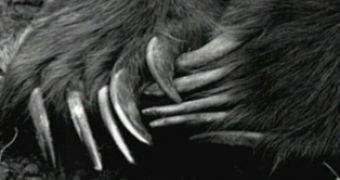Villagers in Borneo are shocked by a mysterious species responsible for several attacks in the region. At least two people have been attacked, and, while villagers analyzed the animal's remains, they weren't able to identify its provenience.
75-year-old Aris Kuna of Kampung Paon Gahat works as a farmer in Borneo. Kuna described that he was in his pepper garden when an animal that resembled a “bear and wild boar” rushed towards him.
He described the unknown species as two feet long (0.6 meters), with a mane and very large and sharp claws. It also had a long stout, reminiscent of a pig's, and gave off an unpleasant odor.
Kuna's grandson Paul, a security guard, describes Aris' ordeal:
“My grandfather (Aris) heard an unfamiliar animal outside the hut, so he went out to check. At first, he could not see where the animal was coming from although he anticipated that danger was lurking.
“Sensing that the animal was near, he said a prayer before starting to swing his machete numerous times to fend off as what he described as an ‘invisible’ attack. Only after he felt he had slashed something that he saw a limb of the animal’s leg on the ground. Moments later, he saw the lifeless animal,” he says.
A week later, an Indonesian plantation worker spotted the animal, and sliced it up with a sickle before it could approach him. The Borneo Post relates that it made hen and wild boar-like noises, standing up on its hind legs, before launching itself for the attack.
27-year-old Jimmy Tubo, an employee at the Sarawak Land Consolidation and Rehabilitation Authority (Salcra), described the mysterious animal as about two feet long (0.6 meters).
Jungle trekker and hunter Paul Hnrnp confirms the fact that the carcass emanated a powerful stench, which could be felt from 32 feet (10 meters) away.
Fellow workers failed to identify the species, which could have reappeared in the region following jungle deforestation, as more and more areas are used for agriculture.

 14 DAY TRIAL //
14 DAY TRIAL //